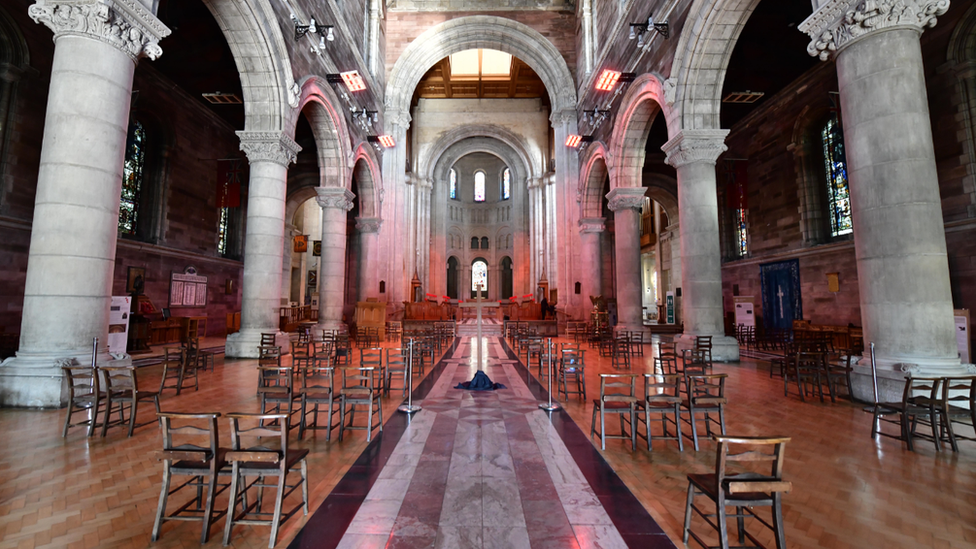Coronavirus: NI Covid numbers inch towards end of a surge
- Published

Over the past week, there has not been any great change in many of the numbers used to measure the effects of the coronavirus pandemic in Northern Ireland.
That said, there are indications that we are still inching our way towards the tail end of a surge which began in October.
The infection rate and death rate have both increased ever so slightly in the past seven days, but these increases are so modest that you can consider the rates to have more or less remained static.
The slow decrease of people in hospital with the virus continues and more than three-quarters-of-a-million people in Northern Ireland have received at least one vaccine dose.
Infection rates
Northern Ireland's infection rate is 56.8 cases per 100,000 population according to data from the UK government. This is for the seven days up until 28 March.
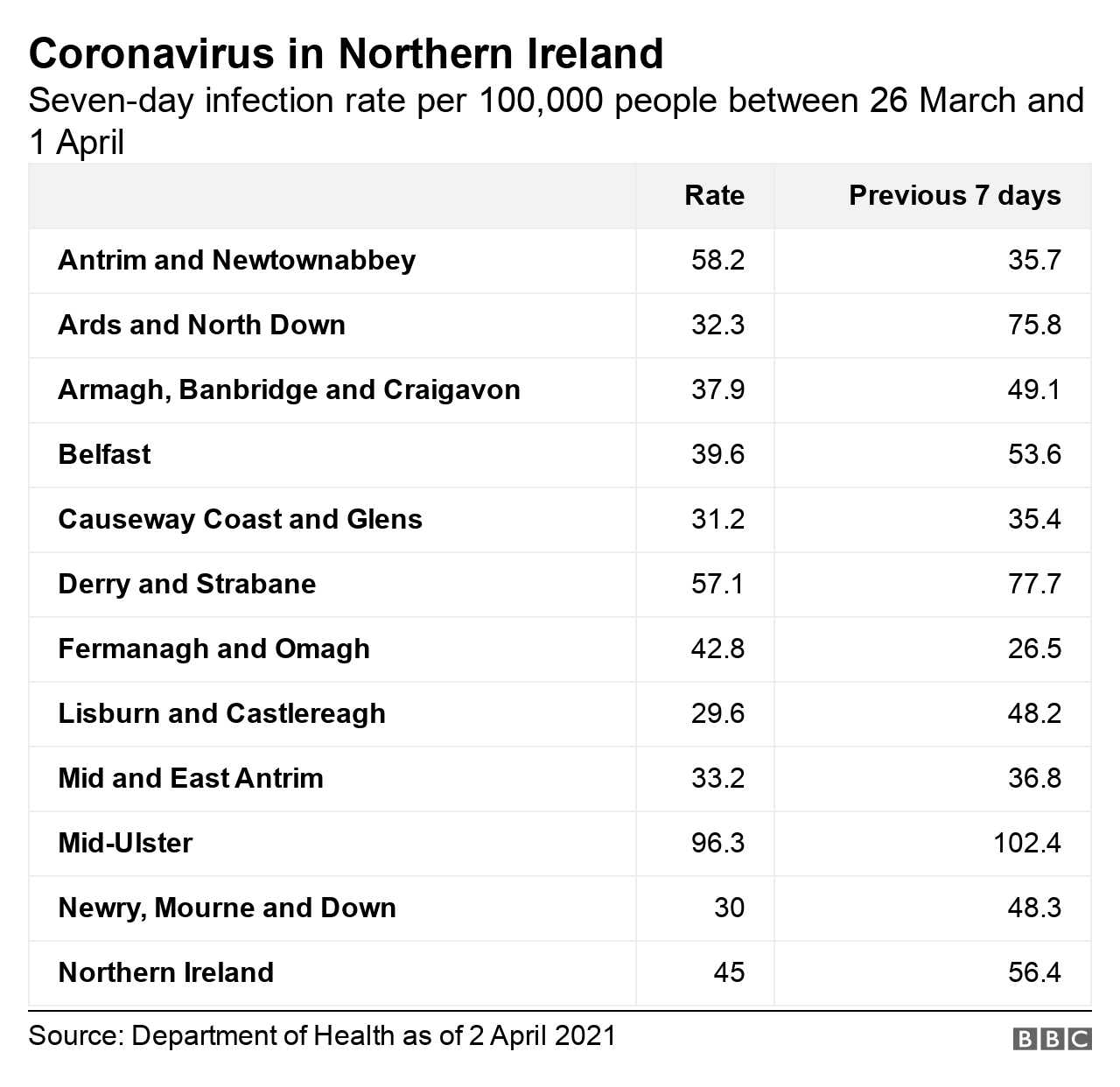
The data running slightly behind real-time like this allows numbers to stabilise, often giving a more accurate picture in comparison to daily figures, which are subject to revision and update.
Northern Ireland's infection rate is slightly higher than that of the entire UK (54.5 per 100,000 population).
On a nation-by-nation basis, we have a higher infection rate than Wales and England, but lower than Scotland.
The Republic of Ireland does not publish its infection rate in the same manner as the UK. But an equivalent rate for the same period can be worked out. It was 79.8 per 100,000 population - considerably higher than Northern Ireland's.
The most recent data from the Department of Health suggests that Northern Ireland's overall infection rate is falling.
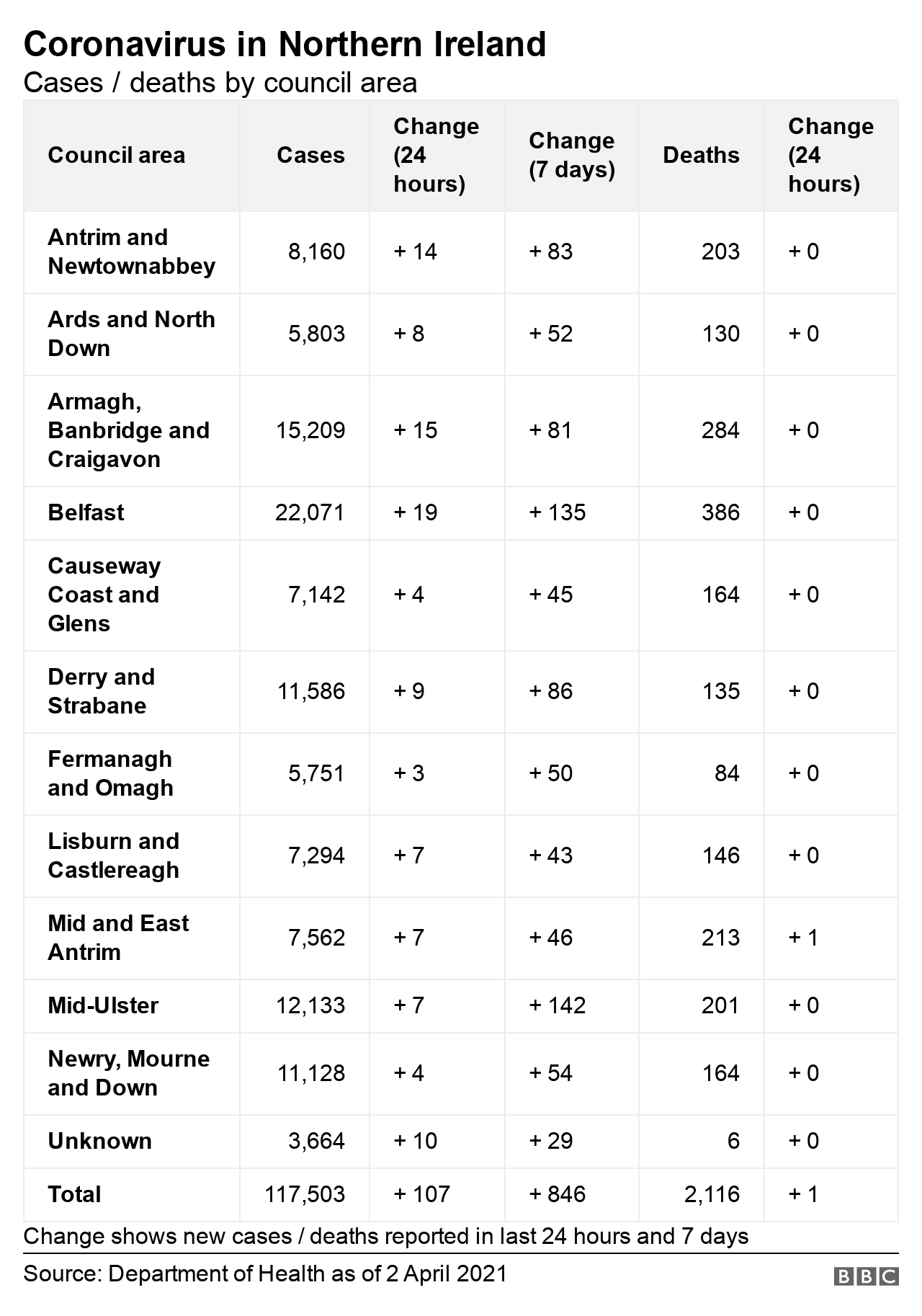
Indeed, the department's data shows that the vast majority of local council areas in Northern Ireland have an infection rate of below 50 cases per 100,000.
There is, however, a concentration of cases in the Mid Ulster area, especially around Cookstown, Magherafelt and Dungannon.
The rate there is slightly below 100 cases per 100,000 and it is effectively inflating Northern Ireland's overall rate.
Likewise, the area around Strabane and Sion Mills continues to have a relatively high infection rate. And this is mirrored just across the border in east Donegal.
All of these rates are - of course - much lower than those we saw in January.
The success of the vaccination programme will undoubtedly have played a significant role in suppressing the infection rate, but it is difficult at the minute to say precisely by what degree vaccines have had an impact.
Restrictions may be easing slightly, but we still remain in a lockdown - and that will also account for some of the drop in infection rates.
There remains the distinct possibility for a rise in the number of infections as restrictions are lifted, despite the vaccination programme.
Testing
Testing is obviously inextricably linked to the infection rate. And depending on the volume of testing, it can shed added light on the state of the pandemic.
Northern Ireland's volume of testing is impressive.
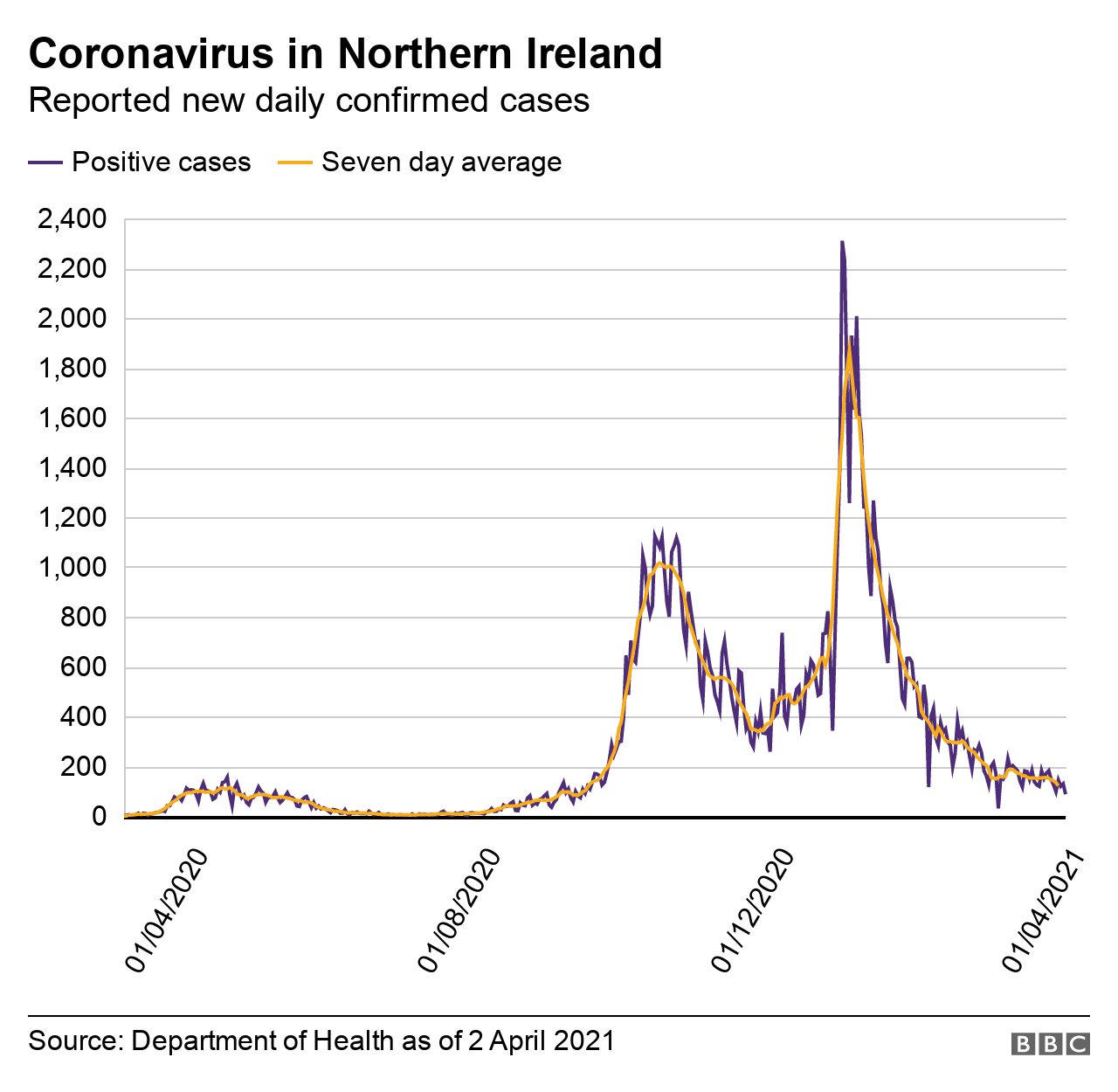
In fact, there has been a continual trend - for many weeks now - of fewer and fewer positive test results for Covid-19, despite the fact that we're testing more and more people.
In the past week, there were almost 41,000 people tested for the virus. Fewer than 1,000 tested positive.
We currently have a positivity rate of just over 2%. Or to put it another way, one in every 48 people tested can expect to actually have the virus.
This is a remarkable turnaround from the height of the winter peak, when more than one in four people tested were getting a positive result.
It is also a really solid measure to show that the spread of the virus has continued to contract over the past two months or so.
Despite the current infection rate being more or less static, the low positivity rate generated by our testing programme suggests that the virus has been in a continuous retreat for some weeks.
If this decline continues, it should be reflected in a falling infection rate within the next week or so.
The R - or reproduction - number is the value calculated by experts to show whether the spread of the virus is speeding up or slowing down.
If the number is one or higher, the virus is spreading. Lower than one indicates that the virus spread is contracting.
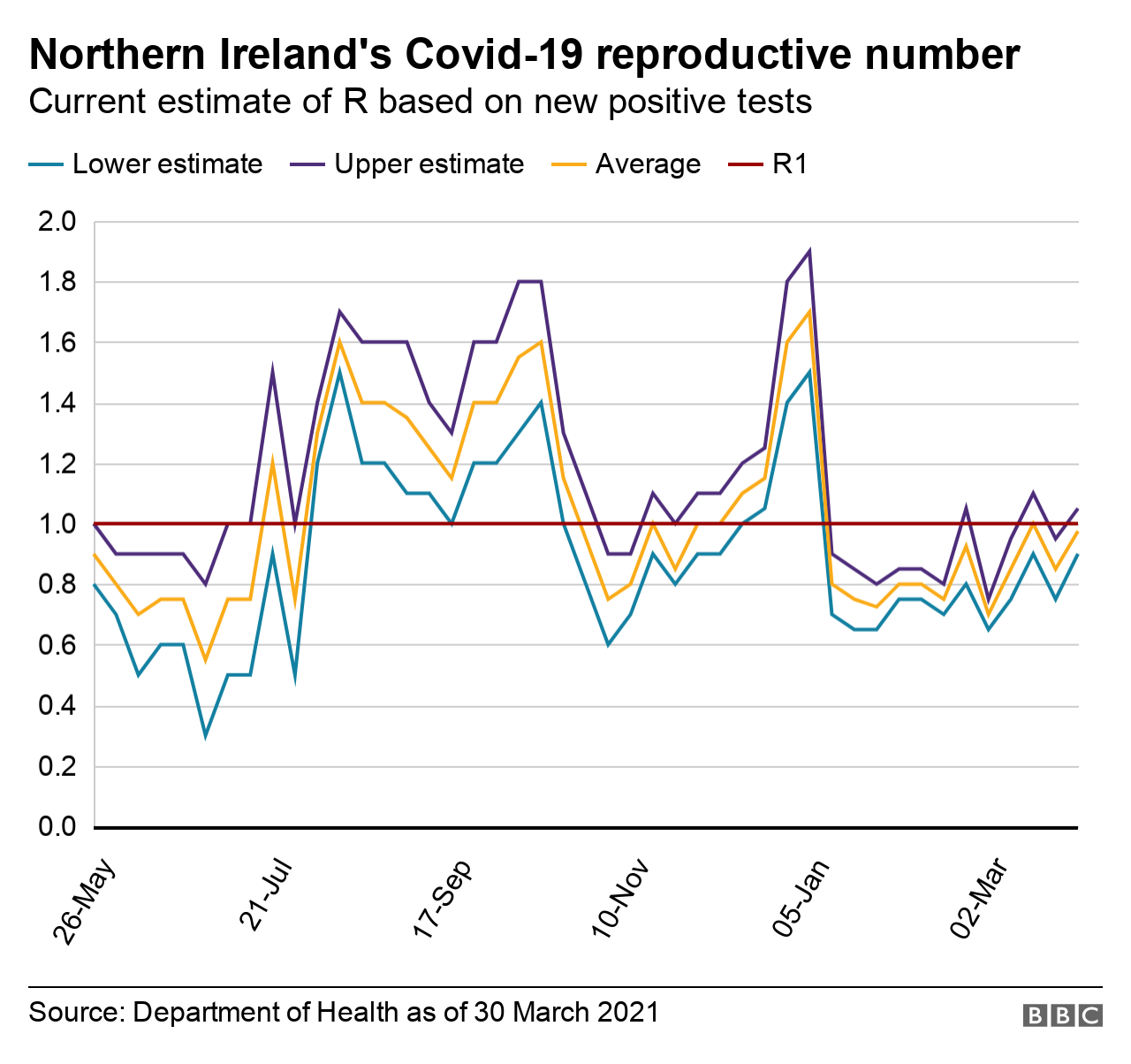
Northern Ireland's current R number is estimated to be between 0.90-1.05. That's a slight rise on the week before, and tallies with the overall infection rate for Northern Ireland being static.
Vaccinations
Northern Ireland is closing in on the milestone of having administered a million Covid-19 vaccine doses. Currently, just shy of 920,000 doses have been given out.
And it is likely - given current vaccination rates - that this barrier will be broken at some stage in Easter week.
The numbers show that 765,005 people in Northern Ireland have received at least one dose of vaccine.

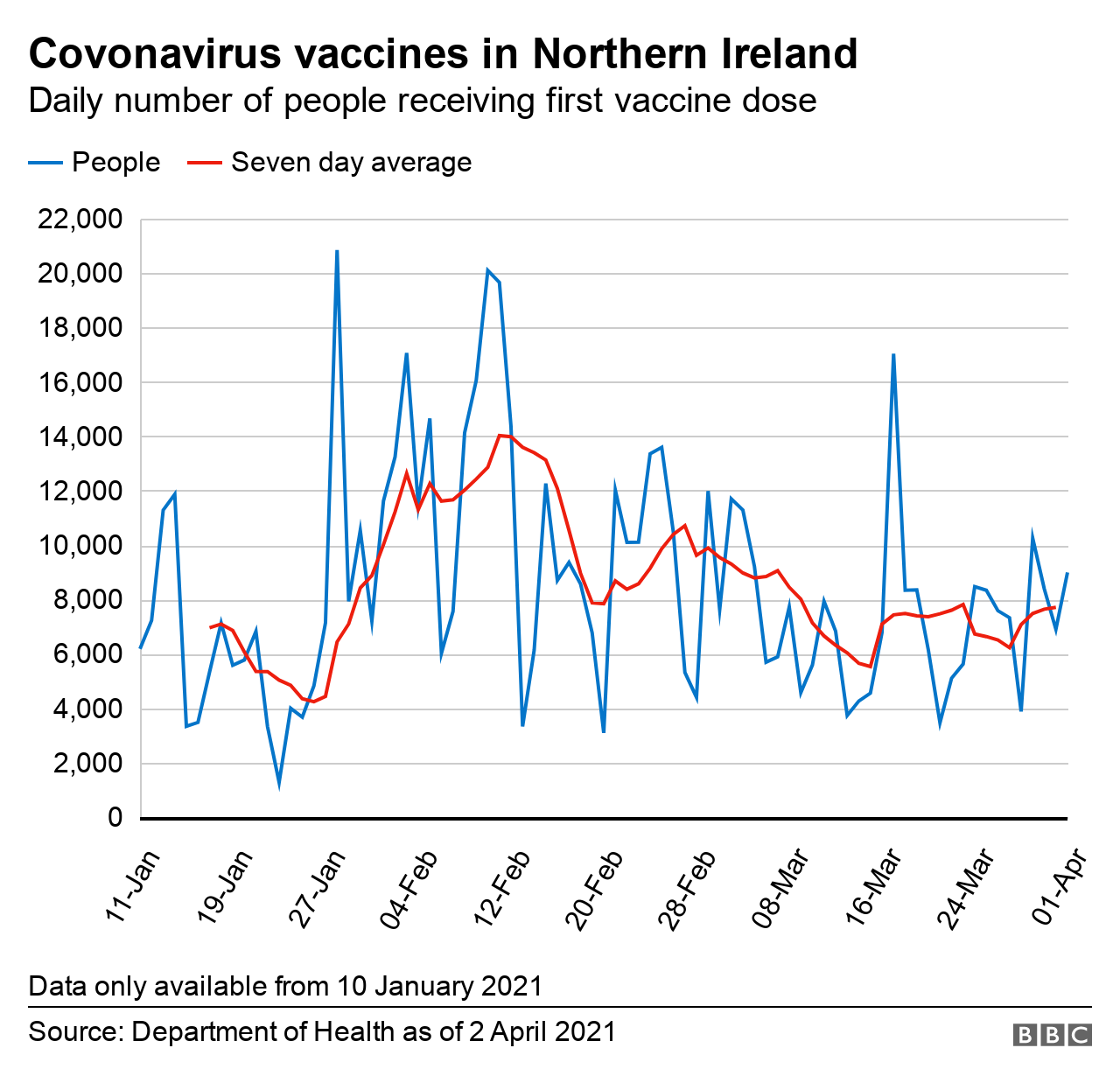

Since the opening of the mass vaccination centre at the SSE Arena in Belfast on Monday, and the availability of the vaccine being extended to the 45-49 age cohort, there hasn't been any marked increase in the rolling average of first dose vaccines being given out.
However, it's very early days for both the mass vaccination centre and the eligibility of the 45-49 age group.
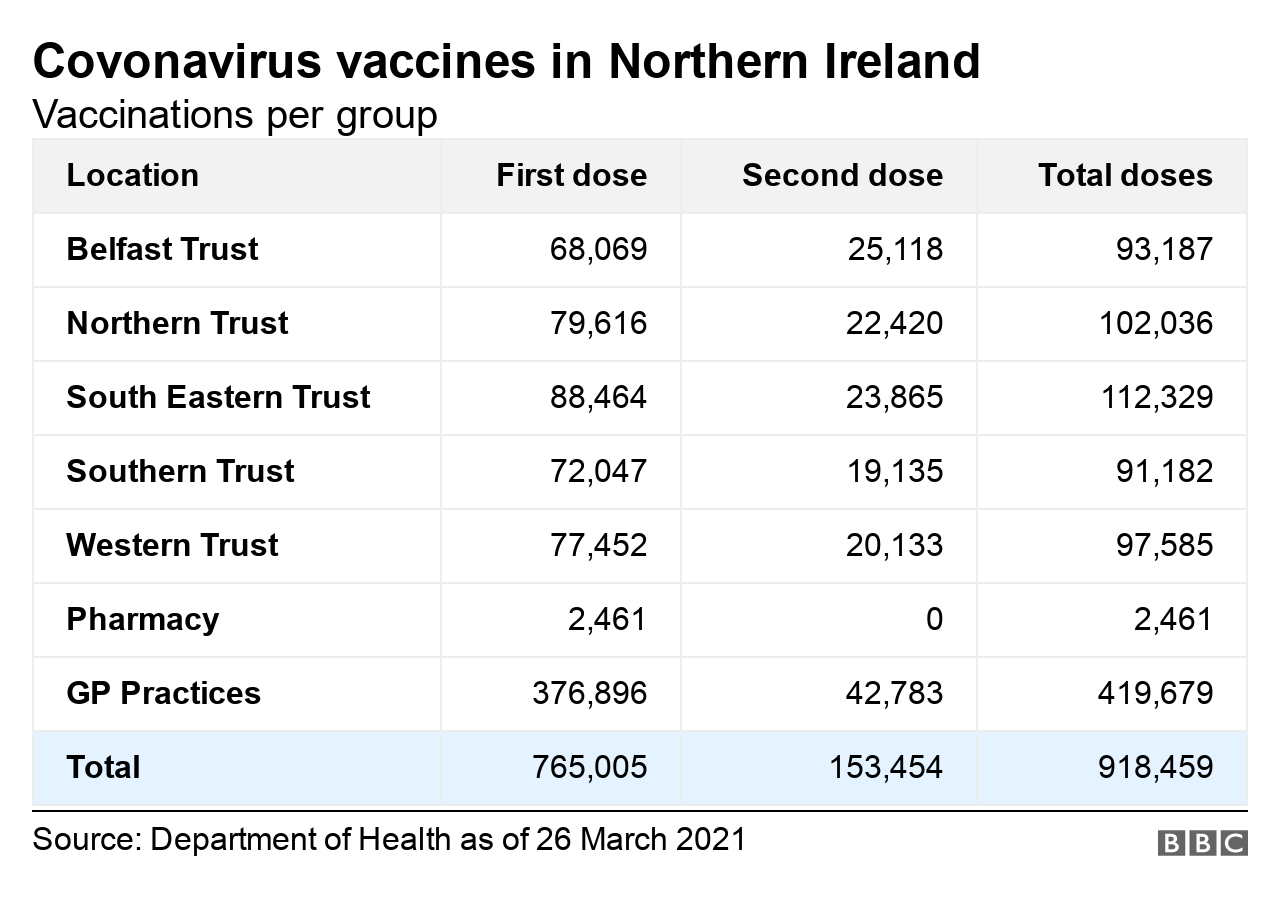
So far in Northern Ireland, about 40% of the overall population has received a vaccine dose.
But if you consider the adult population, this rises to about 53% - meaning that more than one-in-two adults in Northern Ireland has received a jab.
That is impressive. But those rates of vaccination have been lagging behind the rest of the UK. And the gap is growing.
Here is the breakdown of the percentage of the populations in the UK and Ireland that have received a first dose of Covid-19 vaccine:
UK - 47.2%
England - 47.6%
Scotland - 46.6%
Wales - 46.2%
Northern Ireland - 40.4%
Republic of Ireland - 12.1%
The Republic is obviously some distance behind Northern Ireland in its vaccination programme. This is mainly because of vaccine availability and the row between the EU and AstraZeneca.
And it is also worth remembering that the Republic has adopted a different vaccination strategy - with less emphasis on delivery of first doses.
There has been a considerable increase in the delivery of second doses of vaccine over the past few weeks.
There are two ways of measuring the rate of the rollout of second doses. Both are equally legitimate.
The first is by taking the number of people who have received the vaccine and then looking at what percentage of these have also received their second dose.
This shows that about 20% people in Northern Ireland who have had any sort of jab, have received a second vaccine dose. This compares well to the rest of the UK - only Wales has a higher figure by this measure (31.1%).
The other way of measuring the prevalence of second doses is by simply calculating the percentage of the overall population that's received one.
These numbers are understandably smaller, given the UK's focus on first doses. But Northern Ireland still compares favourably to the UK and the Republic.
Here is the breakdown of the percentage of overall population in the UK and Ireland to have received two doses of Covid-19 vaccine:
UK - 7.4%
England - 7.0%
Scotland - 7.6%
Wales - 14.4%
Northern Ireland - 8.1%
Republic of Ireland - 4.7%
Deaths
Northern Ireland's death rate has risen slightly. It's moved from just under one expected Covid death per day, to just over one.
That said, the seven-day rolling average as published on the Department of Health's dashboard has been sitting at one for more than two weeks.
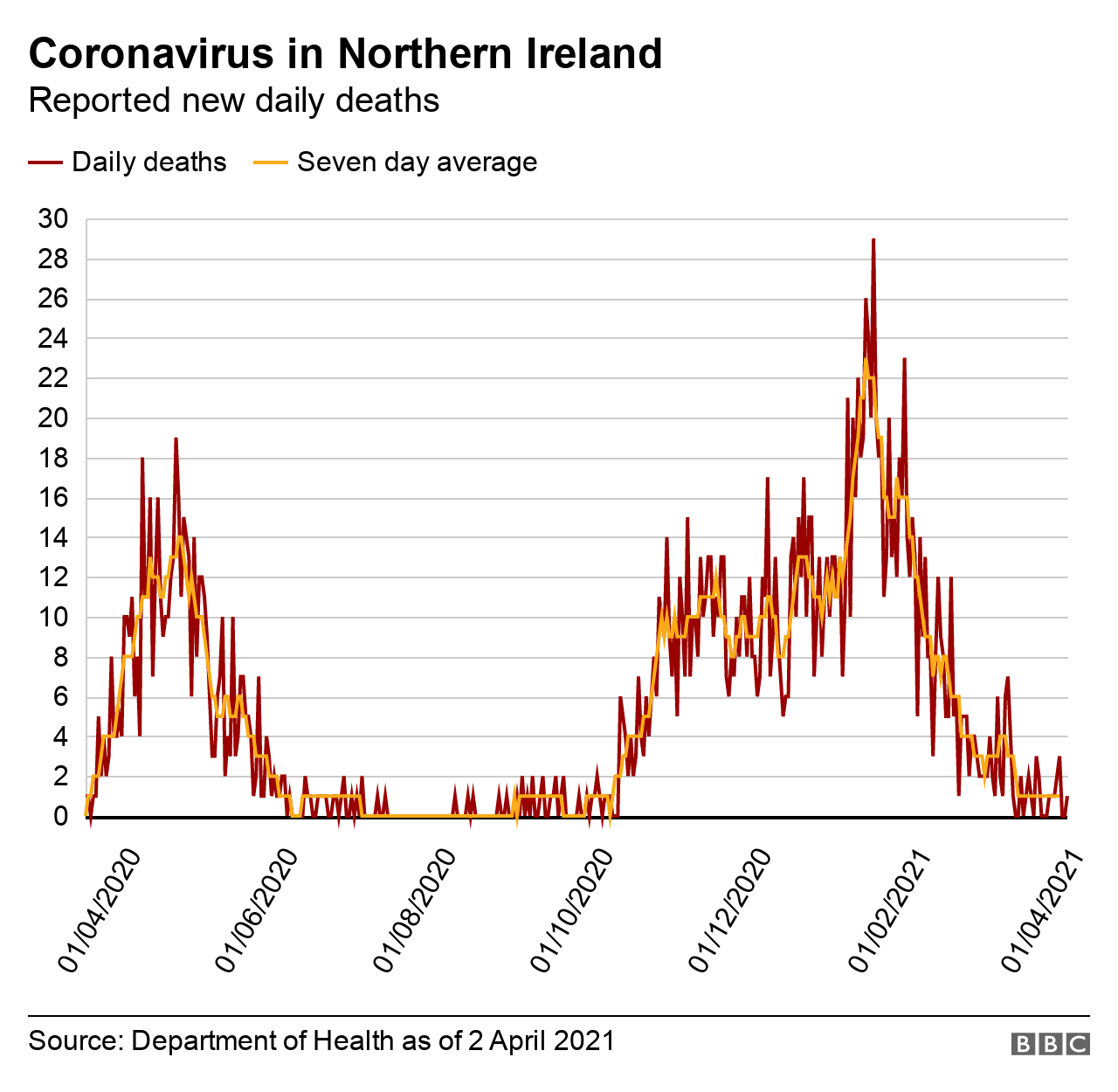
It is higher than anyone would want, but much lower than the peak of the winter surge, when the same number sat at 23.
There was also a slight rise this week in the number of death certificates recorded by Nisra which mentioned Covid-19, thus arresting eight weeks' worth of decline.
However, as this increase goes from one relatively low number to another relatively low number, it is not statistically significant.
Northern Ireland remains the part of the UK with the lowest Covid death rate over the course of the pandemic. These are the Covid death rates for the UK and Ireland, based on deaths per 100,000 population:
UK - 191.5
England - 200
Scotland - 140.9
Wales - 176.5
Northern Ireland - 111.3
Republic of Ireland - 94.2
It can be seen that Northern Ireland is much more in line with the Republic based on these figures.
It is also worth noting that the Republic's true comparative figure will be even lower than that above. This is because the Irish government includes 'probable' and 'possible' Covid deaths amongst its number. The UK does not.
The UK's rate of 191.5 deaths per 100,000 population is one of the worst reported death rates in the world.
Another way of looking at deaths is to take the numbers of positive cases and compare those to the deaths:
UK - about one in 34 positive cases have resulted in a fatality
England - about one in 34 positive cases have resulted in a fatality
Scotland - about one in 28 positive cases have resulted in a fatality
Wales - about one in 38 positive cases have resulted in a fatality
Northern Ireland - about one in 55 positive cases have resulted in a fatality
Republic of Ireland - about one in 50 positive cases have resulted in a fatality
These figures tell a tale of the island having had a much lower rate of death among positive cases than Great Britain.
Hospitalisations
The number of people in Northern Ireland's hospitals with the virus continues to fall. This decline has been slow and steady for the past three weeks or so.

Right now, there are just over a hundred people in hospital with the virus. This is compared to a peak of more than 1,000 about 12 weeks ago.
Admissions have also been falling slowly but steadily. On average, seven people with Covid-19 are being admitted into our hospitals each day.
And all indications are that this will continue to fall - meaning the overall number of people in hospital with the virus should continue to fall.
These numbers can be tied to the rates of infection and the rollout of the vaccination.
Lower infection rates, coupled with the ongoing successful vaccination programme, should result in fewer people getting the virus - and fewer ending up in hospital.
The hospitalisation data are sets of numbers that point towards Northern Ireland having managed to get a good grip on controlling the virus.
Of course, the health service as a whole remains under pressure because of the virus, with some services cancelled or postponed, and resources diverted to tackling the pandemic.
And it's worth noting that the number of people with Covid-19 in intensive care has actually risen, albeit slightly.
Of the 80 people in intensive care beds on Friday, 17 had the virus.

In theory, this number should fall in light of the lower inpatient and admissions figures.
But this is completely dependent on the type of person that gets the virus, if they need hospital treatment and whether they are ill enough to require intensive care.
While the numbers in ICU are much lower than at previous points in the pandemic, that small rise should serve as a reminder that the battle against Covid-19 is not over yet.
- Published26 March 2021
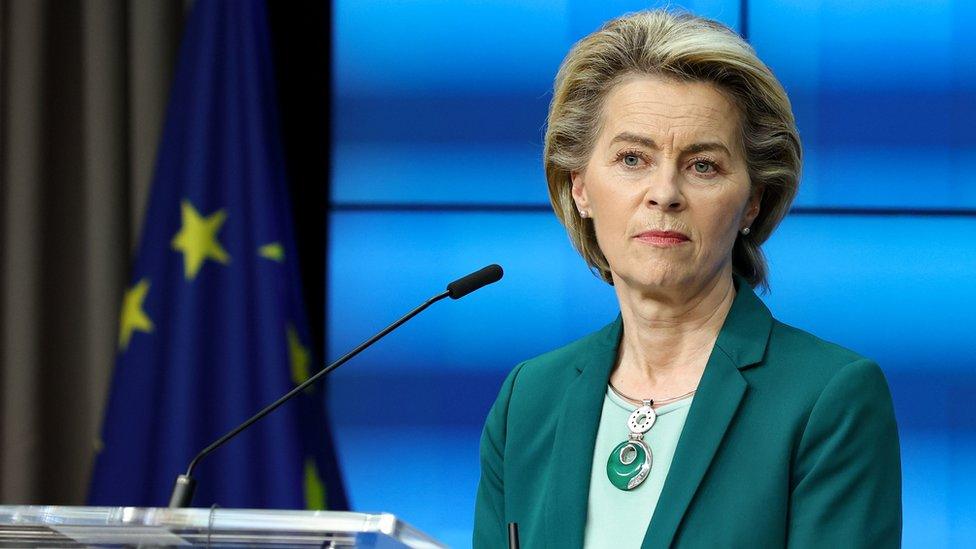
- Published2 April 2021

- Published2 April 2021

- Published2 April 2021
